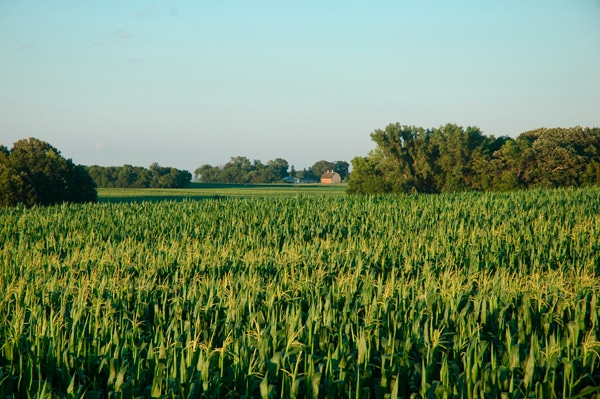July 19, 2011

During the past week, tassels and silks began appearing in cornfields that were planted during mid-May or earlier. Corn planted in early June may not be not be tasselling and silking until early August. There is usually some variability in pollination within cornfields and the pollen-shed period extends from one to two weeks. This year we can expect even greater variability because saturated soil conditions and loss of nitrogen in poorly drained and compacted areas have inhibited corn growth. Soil moisture deficits due to limited rainfall have also resulted in differential plant growth. The pollination period, the flowering stage in corn, is the most critical period in the development of a corn plant from the standpoint of grain yield determination.
Stress conditions such as drought have the greatest impact on yield potential during the reproductive stage. Past research indicates that four days of stress (i.e. corn wilted for four consecutive days) at the 12-14 leaf stage has the potential of reducing yields by 5-10%. The potential for yield losses to soil moisture deficits increases dramatically when plants begin to flower. During tassel emergence, four days of moisture stress has the potential to reduce yields 10-25%. Silk emergence is the most critical period in terms of moisture use by the plant. During this stage, leaves and tassels are fully emerged and the cobs and silks are growing rapidly. Four days of moisture stress during silk emergence has the potential to reduce yields 40-50%. However, the stress conditions we are alluding to over these four-day periods are severe and involve extensive leaf rolling (characterized by plants with “pineapple” like leaves) throughout much of the day. Also keep in mind that the corn plant is more vulnerable to hail injury during the period from tassel emergence (VT) to silking (R1) than during any other period because the tassel and all the leaves are completely exposed. Complete defoliation of the plant at VT usually results in 100% yield loss.
Key steps in pollination process
The following are key steps in the corn pollination process.
Pollen shed usually begins two to three days prior to silk emergence and continues for five to eight days with peak shed on the third day. Under very dry conditions, silk emergence may be delayed, and such “asynchronization” of pollen shed and silking may result in poor kernel set and reduced grain yields. However, in some years under favorable growing condition, silks may actually emerge before tassels fully emerge and pollen shed starts in certain hybrids. On a typical midsummer day, peak pollen shed occurs in the morning between 9 and 11 a.m. followed by a second round of pollen shed late in the afternoon. Pollen may be shed before the tassel fully emerges (“stretches out"). Pollen shed usually begins in the middle of the central spike of the tassel and spreads out later over the whole tassel with the lower branches last to shed pollen.
Pollen grains are borne in anthers, each of which contains a large number of pollen grains. The anthers open and the pollen grains pour out in early to mid morning after dew has dried off the tassels. Pollen is light and is often carried considerable distances by the wind.
Pollen shed is not a continuous process. It stops when the tassel is too wet or too dry and begins again when temperature conditions are favorable. Pollen stands little chance of being washed off the silks during a rainstorm as little to none is shed when the tassel is wet. Also, silks are covered with fine, sticky hairs, which serve to catch and anchor pollen grains.
Under favorable conditions, pollen grain remains viable for only 18-24 hours. However, the pollen grain starts growth of the pollen tube down the silk channel within minutes of coming in contact with a silk and the pollen tube grows the length of the silk and enters the female flower (ovule) in 12-28 hours.
A well-developed ear shoot should have 750-1,000 ovules (potential kernels) each producing a silk. The silks from near the base of the ear emerge first and those from the tip appear last. Under good conditions, all silks will emerge and be ready for pollination within three to five days and this usually provides adequate time for all silks to be pollinated before pollen shed ceases.
Pollen of a given plant rarely fertilizes all the silks of the same plant. Under field conditions 97% or more of the kernels produced by each plant may be pollinated by other plants in the field. The amount of pollen is rarely a cause of poor kernel set. Each tassel contains from 2 to 5 million pollen grains, which translates to 2,000-5,000 pollen grains produced for each silk of the ear shoot. Shortages of pollen are usually only a problem under conditions of extreme heat and drought. As noted above, poor kernel set is more often associated with poor timing of pollen shed with silk emergence – with silks emerging after pollen shed (poor “nick”). However, hybrids seldom exhibit this problem unless they experience extreme drought stress.
You May Also Like




